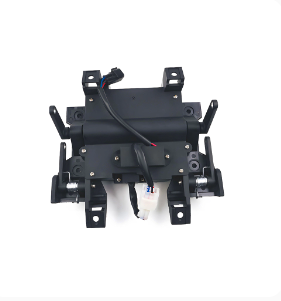FAs the automotive world shifts to electric vehicles (EVs), every component is being reimagined for efficiency and performance. The 4WD Front Differential Actuator Motor is a perfect example of how even the most seemingly standard parts are being transformed for the electric era. This motor, responsible for securely positioning the windshield, is now playing a surprising role in helping EVs go further and be safer. Beyond its basic function, it's becoming an integral part of the vehicle's overall intelligence system. This article explores how innovations in this key component are contributing to the next generation of cleaner, smarter transportation, and why it represents the kind of subtle but important engineering that separates leading EVs from the competition.

For electric vehicles, aerodynamics is key to maximizing range. A sleek design helps the car slip through the air with less effort, which saves battery power. The 4WD Front Differential Actuator Motor allows designers to create lower, more streamlined windshields that fit perfectly with the car's body. By ensuring a precise and stable fit, this small motor helps reduce air resistance, directly contributing to the distance an EV can travel on a single charge. This precision engineering enables more daring aerodynamic designs that would be impossible with traditional bracket systems. The motor's ability to maintain perfect alignment even under high-speed wind pressure ensures that the aerodynamic profile remains consistent. Furthermore, the reduced energy loss to air resistance means less strain on the battery system, potentially contributing to longer battery life. As EV manufacturers compete for every extra mile of range, components like this demonstrate how intelligent engineering in unexpected places can yield significant cumulative benefits.
Modern cars are filled with cameras and sensors, many of which are mounted near the windshield. These systems are the "eyes" of advanced safety features like automatic emergency braking and lane-keeping. If the windshield bracket is not perfectly stable, these "eyes" can be misled. A reliable 4WD Front Differential Actuator Motor ensures a rock-solid foundation, guaranteeing that these life-saving technologies work correctly every time you drive. Even minor vibrations or gradual shifting can degrade sensor accuracy over time, compromising systems that drivers depend on for safety. The latest generation of these motors incorporate vibration-dampening technologies and precision calibration that maintains sensor alignment through years of driving over rough roads and varying conditions. This reliability is particularly crucial as vehicles move toward higher levels of automation, where sensor precision becomes non-negotiable. The motor's consistent performance ensures that safety systems provide the same level of protection throughout the vehicle's lifespan, making it a silent guardian of modern automotive safety standards.
Car quality is often judged by its quietness and lack of vibration. A poorly made component can create annoying buzzes or rattles. Advanced designs of the 4WD Front Differential Actuator Motor focus on smooth, silent operation. This attention to detail eliminates a potential source of noise, enhancing the peaceful, premium feel of the cabin and building long-term trust in the vehicle's quality. Beyond mere silence, these motors are engineered to operate with a refined smoothness that conveys precision and quality. The absence of vibration from this component prevents sympathetic rattles in other interior parts, addressing what often becomes a source of customer complaints in lesser vehicles. This quiet reliability becomes part of the vehicle's character, reinforcing the owner's perception that they've invested in a well-engineered product. In the competitive EV market where cabin quietness is a major selling point, ensuring every component contributes to this experience is essential for building brand loyalty and positive word-of-mouth recommendations.
The evolution of the 4WD Front Differential Actuator Motor extends beyond its mechanical functions to embrace the connected vehicle ecosystem. Modern versions can communicate with the vehicle's central computer, providing real-time data on their operational status and any potential maintenance needs. This connectivity allows for predictive maintenance alerts and ensures optimal performance through software updates that can refine the motor's operation throughout the vehicle's life. The integration capability represents how traditional components are evolving to become part of the vehicle's intelligent network, contributing to a smarter, more responsive driving experience that continues to improve over time.
Your email address will not be published. Required field are marked*